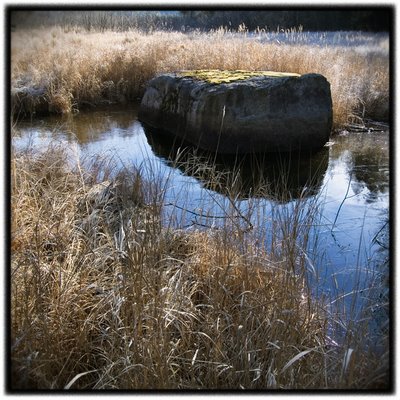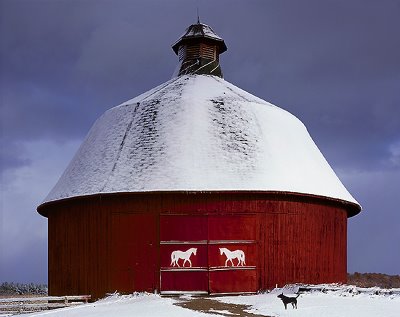Sunday
Dec032006
Joel Truckenbrod ~ Dusk, Cascade River, Minnesota
 Sunday, December 3, 2006 at 11:31AM
Sunday, December 3, 2006 at 11:31AM 
In response to Ana's comment: From what I've seen of art-school culture over the past few months, I think there absolutely is an almost superstitious fear of formal beauty. It's a very interesting experience (in a tear-my-hair-out sort of way) to have gone from the NPN-like culture where my photography is considered to be quite ugly to the art-school culture where I'm constantly being beaten up for my love of formal beauty. Both of these extremes seem somewhat pathological. -
Having recently graduated from art-school myself (BFA in painting), I found myself having flashbacks to some of the very same issues. Specifically, the notion of formal beauty was a big "no-no". When pressed, my post-modernist professors would submit that there was nothing wrong with formal beauty (as it is different from "pretty")...But, virtually any work that went down this forbidden road was dismissed - unless something was done in the work that would directly challenge, diminish or (preferably) poke fun at the "beautiful" leanings of the piece. My conclusion was that formal beauty was perceived as a threat and was viewed as part of the visual lexicon of "lower" means of artistic expression. Of course, the irony to the whole situation was that the more I was told how formal beauty was boring, uninspired, cliche, often kitsch, etc...the more intrigued I became with it. Though I my paintings didn't really attempt to confront this "issue" (I actually wanted to graduate), I found photography and began to approach the camera as a way to come to terms with some of these questions that I had. I did this on my own time and of my own ambition, which is probably why it has taken a hold of me more than painting ever did - and why I spend all of my time with my camera rather than my paintbrushes these days. After photographing now for almost a couple of years (and also being outside of the school environment), I feel like I'm beginning to find myself in my photography. That's not to say my many questions have been answered. In fact, more have probably arisen, which is something I welcome. They are of my own choosing though, which seems very important. At some point, the choice must be made to pursue those things that internally trigger us, things that we know hold "truth" - even if various groups and cultural/artistic viewpoints tell us no. Even though my professors would probably be appalled with my change of directions, I have never been more engaged with my artwork than I am now.





